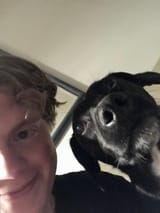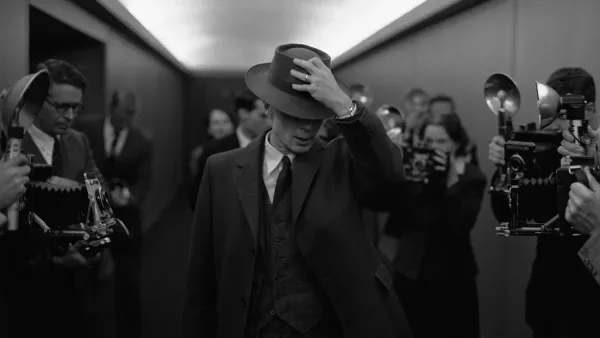Wild Gleaming Space: Charting the Beyond

This review comes to us from our On-The-Ground correspondent and Santa Barbara native, Jack O’Mahoney.

Wild Gleaming Space is a documentary that is equal parts lyrical and investigative, and so beautifully shot I thought it was a narrative film until about twenty minutes in. Beginning in the Panamanian rainforest, filmmaker Mauro Colombo traces his own experiences witnessing death, starting with his father’s passing in a hospital. This is followed closely by the death of a stranger called Jimmy, whom Colombo briefly resuscitates after finding him dead in the middle of a deserted jungle road. Deeply affected by these events, Colombo sets out to uncover what Jimmy and his father experienced as they departed the physical realm.
Colombo traverses the globe, speaking with people who have been touched by death in various ways, including Faiza, a woman who recently lost her son, and Surya, who had a near death experience after an accident put him in a coma. Colombo also spends time with people who are seeking answers to existential questions in more material ways, from neuroscientists mapping the brain to astrophysicists photographing black holes. Through it all, Colombo attempts to use the medium of film to visually capture the state of consciousness that people describe in their experiences with death.
The film is visually stunning, using the natural world as an analogue for the expansive state of consciousness that supposedly comes with death. The camera is unobtrusive, a gentle listener, adding context to various interviews through dozens of luxurious wide shots that depict the worlds that the various interviewees inhabit. Each of these sequences is posed like a question: Is this what death is? An ocean? A desert full of snow? A foggy mountain top? The depths of a cave? An endless, patchy road in the middle of the jungle?
The film revels in the futility of the task it has set for itself. Based on the accounts of people interviewed throughout, we learn quickly that it would be impossible to capture what they experience or imagine as “death.” A recurring theme in these interviews is the assertion that the ordeal of death is one beyond words: It is a place that is not really a place, it is everything and nothing at once, it is a silence so profound that it sings. Colombo and the audience must accept that anything captured visually is at best a gesture in service of the death experience, not a literal representation. In this way, the entire film is a poem, an ode to something that by its very nature cannot be conveyed.
Wild Gleaming Space may not be everybody’s cup of tea, particularly if one is a strict atheist. It is not dogmatic, but it does leave many doors open for various possibilities and beliefs that go beyond a materialist understanding of death. The film treats the experience of death and dying with deep respect and care, and looks at it unflinchingly, with curiosity rather than fear. In Western culture, since we conceive of time linearly, we are often compelled to view death as a final stop; a threshold through which lies only nonexistence. This film gently pushes back on that idea, suggesting that death is merely an altered state, a place that we should not fear but instead be in conversation with. One particularly poignant story is that of Raquel and her family, who are indigenous to an area of Panama that was intentionally dammed and flooded. Now displaced and unable to connect with her homeland, Raquel reaches out to her grandfather across death’s boundary, attempting to learn from him and in doing so uphold her community’s ancestral traditions. Overall, the film leaves the impression that death is a return of sorts, one that plunges the individual back into an expansive, collective whole.
In a time of profound upheaval and unrest on a global scale, when a majority of the earth’s population lives under the direct or indirect influence of imperial governments that cause mass death and suffering, we need art that invites us to dig into painful areas of human experience that are often repressed and ignored. What does death have to teach us? How can we find beauty in our grief? What needs to be allowed to die so that something new can take its place? Let’s try and make ourselves a little empty in order to receive life.




